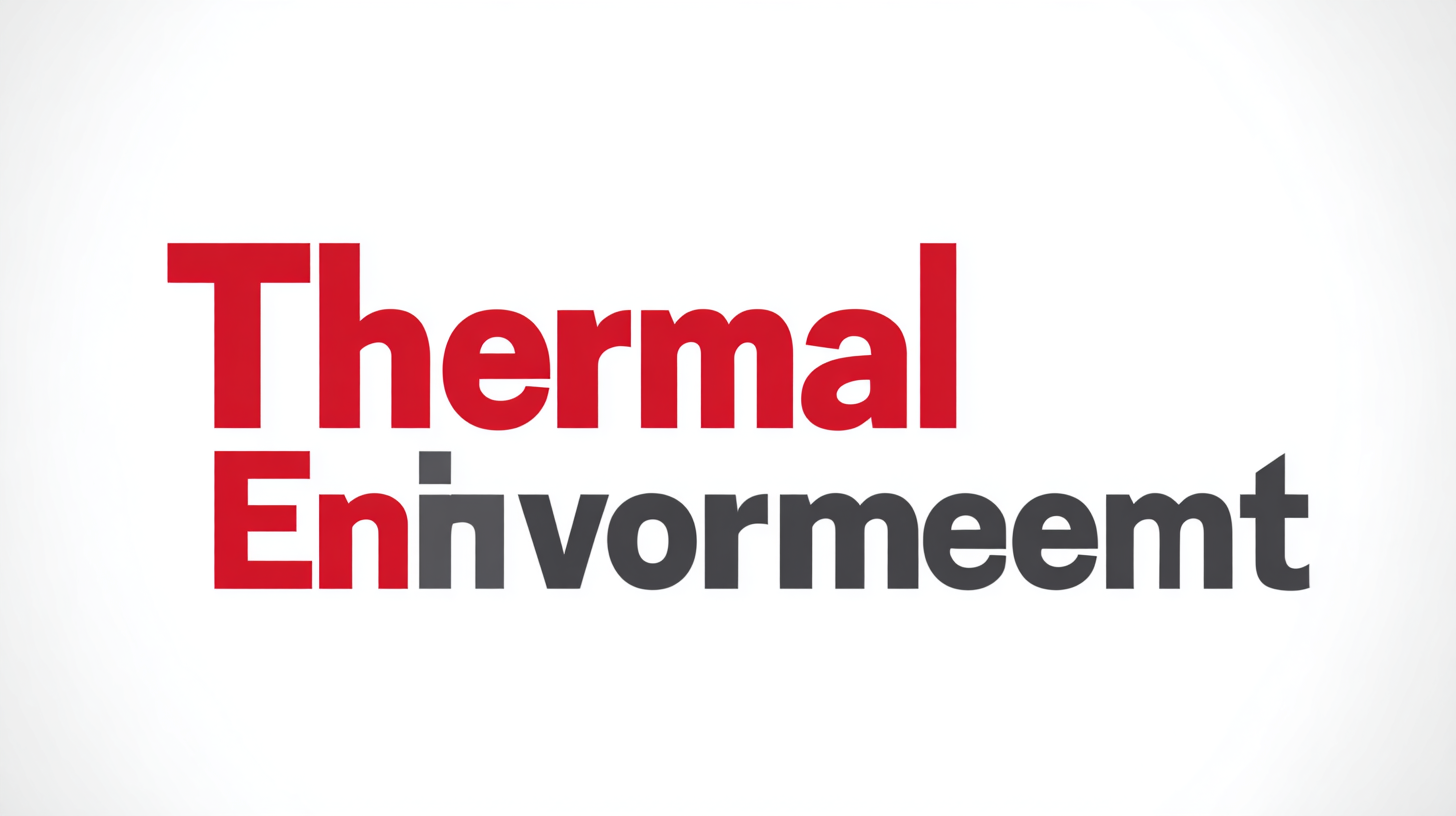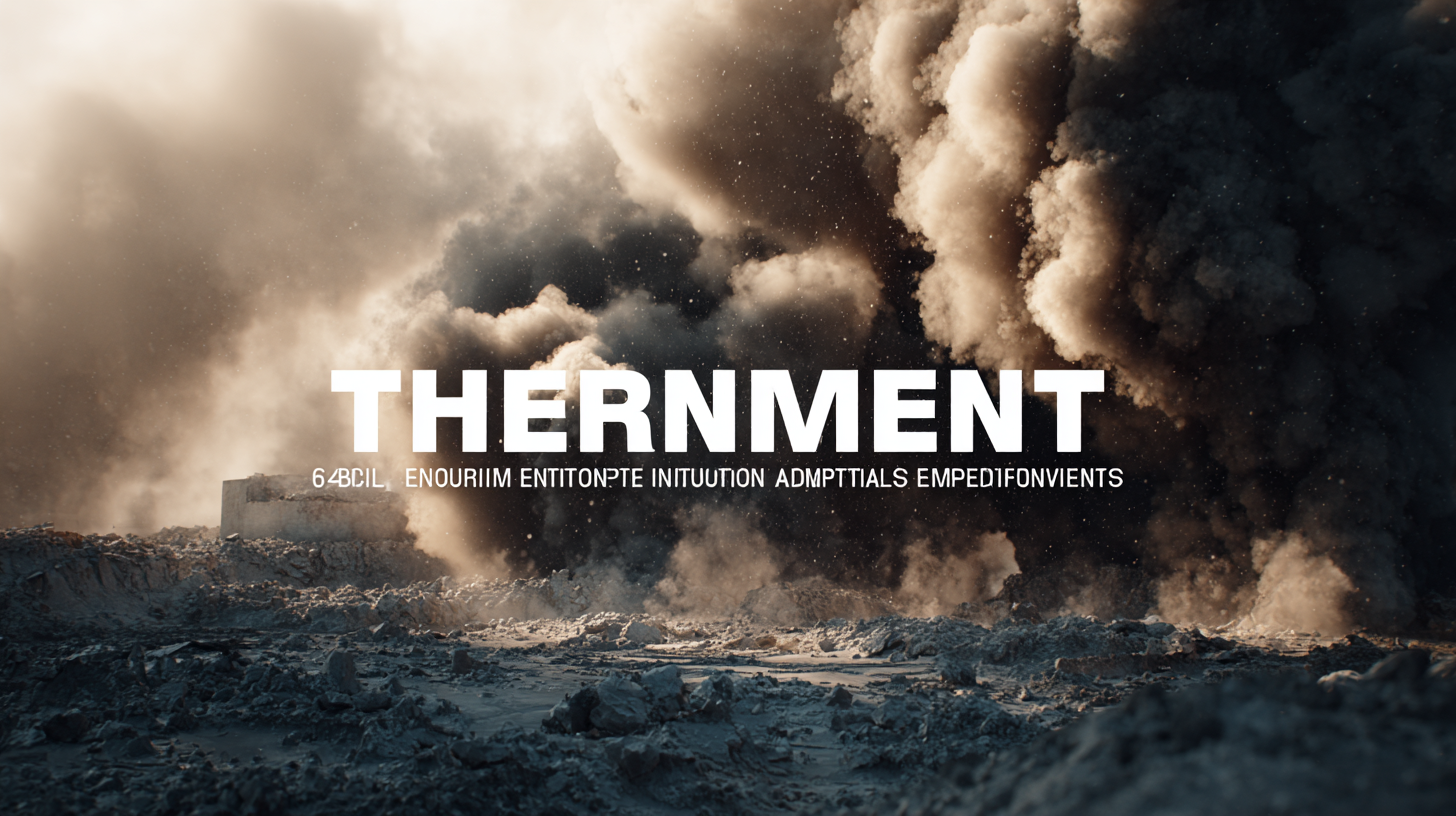
-
Home
-
Product Center
-
Application
-
Support
-
JT Cloud
-
About Us
-
Contact Us
Leave Your Message

 The significance of an optimal Thermal Environment in various industries is increasingly acknowledged as a critical factor driving efficiency and innovation. According to a report by MarketsandMarkets, the global thermal management market is projected to grow from $5.2 billion in 2021 to $8.9 billion by 2026, highlighting the expansive potential and necessity for advancements in thermal solutions across sectors such as electronics, automotive, and aerospace. As industries strive for higher performance, the role of effective thermal management in enhancing product durability, energy efficiency, and operational effectiveness becomes paramount.
The significance of an optimal Thermal Environment in various industries is increasingly acknowledged as a critical factor driving efficiency and innovation. According to a report by MarketsandMarkets, the global thermal management market is projected to grow from $5.2 billion in 2021 to $8.9 billion by 2026, highlighting the expansive potential and necessity for advancements in thermal solutions across sectors such as electronics, automotive, and aerospace. As industries strive for higher performance, the role of effective thermal management in enhancing product durability, energy efficiency, and operational effectiveness becomes paramount.
The future of thermal solutions lies not only in maximizing equipment performance but also in sustaining a competitive edge through innovative materials and technologies. As we delve deeper into the nuances of Thermal Environment optimization, we uncover the transformative impact it could have on diverse industry applications, aligning with global sustainability goals and paving the way for smarter, greener solutions.
The thermal environment plays a crucial role in manufacturing efficiency and product quality across various industries. As temperatures fluctuate, materials and processes can be significantly affected, leading to variations in product characteristics and operational performance. For instance, in the semiconductor industry, precise temperature control during fabrication processes is essential to ensure the integrity and reliability of microchips. Even slight deviations can result in defects that compromise quality and increase waste.
Moreover, the impact of thermal conditions extends to energy consumption and production speed. In industries like automotive manufacturing, maintaining optimal temperatures can enhance the performance of machinery and reduce downtime. When machines operate within their ideal thermal ranges, they not only perform better but also consume less energy, contributing to sustainability goals. Therefore, investing in advanced thermal management technologies is vital for organizations looking to boost efficiency and maintain the high standards of product quality demanded in today's competitive market.

The diverse applications across various industries underscore the critical role of optimal thermal environments in enhancing product quality and operational efficiency. For instance, in the food processing sector, maintaining precise temperature controls is vital for food safety and quality. The global ammonium chloride market, projected to reach $238.136 billion by 2033, highlights the increasing significance of chemical compounds in various industrial processes, including temperature regulation in food production.

Understanding the optimal temperature ranges is crucial for ensuring safety and performance across various industries. For instance, in the food industry, maintaining a temperature between 32°F and 40°F (0°C to 4°C) is essential to prevent bacterial growth and ensure food safety, as underscored by a 2022 USDA report. Similarly, in the pharmaceuticals sector, storage conditions demand strict adherence to specified temperature limits, generally between 36°F and 46°F (2°C to 8°C) to maintain drug efficacy and integrity. Deviating from these ranges can lead to compromised products, posing health risks to consumers.
Tip: Implement a temperature monitoring system that provides real-time alerts to ensure compliance with these critical temperature ranges. Regular audits and maintenance of equipment can also enhance safety and performance by identifying issues before they escalate.
In industrial applications, equipment and machinery operate optimally within designated temperature ranges. For example, electronic devices function best at temperatures around 70°F to 80°F (21°C to 27°C), as excessive heat can lead to reduced performance and early failure, according to a recent study published by the IEEE. Keeping a close eye on these metrics can significantly extend equipment lifespan and improve productivity.
Tip: Consider utilizing heat management solutions, such as cooling systems or thermal insulation, to maintain optimal operating conditions in your manufacturing environment. These measures can significantly mitigate risks related to overheating and enhance overall operational efficiency.
This chart displays the optimal temperature ranges for safety and performance across various industries, highlighting key metrics for operational efficiency.
In recent years, the emphasis on effective thermal management solutions has surged across various industries, reflecting an urgent need to address energy efficiency and operational reliability. Emerging innovations in this field showcase a fascinating evolution in technologies designed for enhanced thermal performance. For example, the implementation of phase-change materials (PCMs) has gained traction in sectors such as electronics and construction. These materials can absorb, store, and release thermal energy, leading to significant improvements in temperature regulation and energy savings.
Another exciting trend is the rise of computational fluid dynamics (CFD) tools, which allow engineers to simulate and optimize thermal environments in real-time. By utilizing these advanced simulations, industries can identify potential overheating issues and develop strategies to mitigate them before they happen. This proactive approach not only enhances product longevity but also contributes to more sustainable practices by minimizing waste and energy consumption. As industries continue to innovate in thermal management solutions, the opportunities for improved efficiency and performance are limitless, paving the way for smarter and greener operational frameworks.
In today's manufacturing landscape, optimizing the thermal environment has emerged as a crucial strategy for enhancing energy efficiency and reducing operational costs. Industries ranging from food processing to pharmaceuticals are increasingly recognizing that sustainable practices, particularly in temperature control and heat management, play a pivotal role in resource conservation. By investing in advanced thermal insulation and precise climate control technologies, businesses can minimize energy consumption while simultaneously ensuring product quality and compliance with industry standards.
Moreover, leveraging the right thermal environment can lead to significant cost savings. For example, organizations that implement energy-efficient heating and cooling solutions can reduce their utility bills and lessen their carbon footprint. Companies often find that integrating smart sensors and automation not only streamlines energy usage but also provides real-time data to fine-tune processes, leading to further optimization. As more industries commit to sustainability, the potential for harnessing the best thermal environment will undoubtedly drive innovation and competitive advantage, shaping a greener future for manufacturing.